It is a pleasure to have Sylvia Wang (aka Wang Yinghan) here with Photofairs Shanghai to tell us about her inspiring experience and ideas about art collection, especially photographic works, and what she thinks about the Fair’s first online show, Wanderings.

Sylvia Wang
Sylvia Wang is an ardent supporter of contemporary art, promoting its development in China as a young art collector and influencer. Her keen interest in contemporary art was based on her frequent visits to major art institutions during her studies and internships in New York, which led her to embark on her own art collection.
Working closely with contemporary art in recent years, Sylvia Wang became the founding patron of M+ Museum of Visual Culture. She is also a council member of Hong Kong Huajing Society, young patron of K11 Kunsthalle and consultant of ArtBiz Asia Forum. She currently serves as Asia Lead in TRLab, a fine art NFT platform. In 2021, Sylvia Wang founded her personal fashion and art platform “Yinghan’s Dictionary”, mainly conducting interviews with professionals and organizing exhibition tours in the form of videos, taking art promotion as an opportunity for brand new artistic exploration.
“As I continue to collect art, I begin to better understand my own preference and I am able to develop my unique collection system that fits my background and education, valuing long-term potential rather than blindly following market hot trends.”
PF: What inspired you to start collecting photography? What is the most recent artwork you’ve collected?
S: For art lovers, art fair is a great opportunity to start their collection journey as it features professional organizers, curated exhibitors and fellow art enthusiasts. Probably inspired by the strong boom of contemporary art and the increasingly mature market, I began to collect art seriously in 2016 when I attended an art fair in Hong Kong. I started with easel pictures before moving to installations, sculptures and photos and images. I believe photography is one of the art forms that can resonate with people the most.
My most recent photo collection is Untitled – Through A Day – A Life by Italian artist Giovanni Ozzola, which captures a moment of sea on a Spanish island. I found it in an art fair as well.
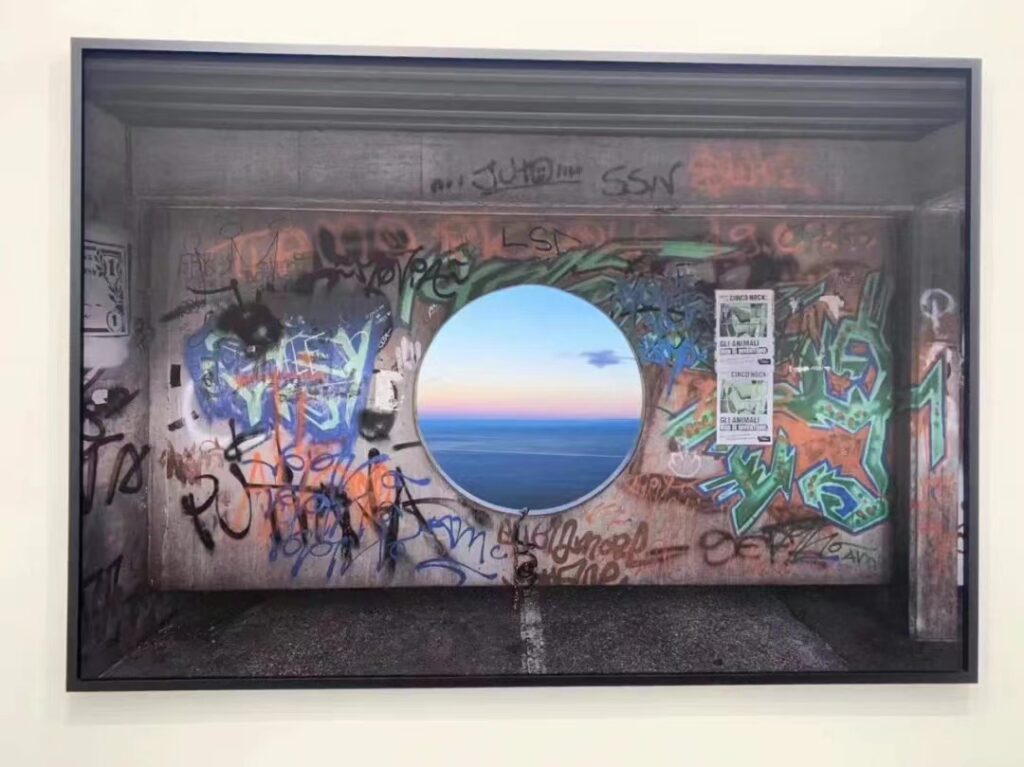
© Giovanni Ozzola, Untitled – Through A Day – A Life. Courtesy of Sylvia Wang
PF: What are the most important factors to you when collecting a photographic artwork?
S: First, its visual language must speak to me. Other important factors include the relation between the moment of capture and the present and the background story of the artwork.
PF: You have collected some works by Chen Wei, who participated in our first online show, Wanderings. Why do you like his creation?
S: The first Chen Wei’s solo exhibition I saw was “Where Are You Going Tonight”, the opening exhibition of K11 in Guangzhou. I was curious about this exhibition whose name was in Cantonese, and I was impressed by the immersive experience created by the photographic installation. After returning to Hong Kong, I collected Some Dust, one of Chen Wei’s earlier pieces, and have since been following his works.
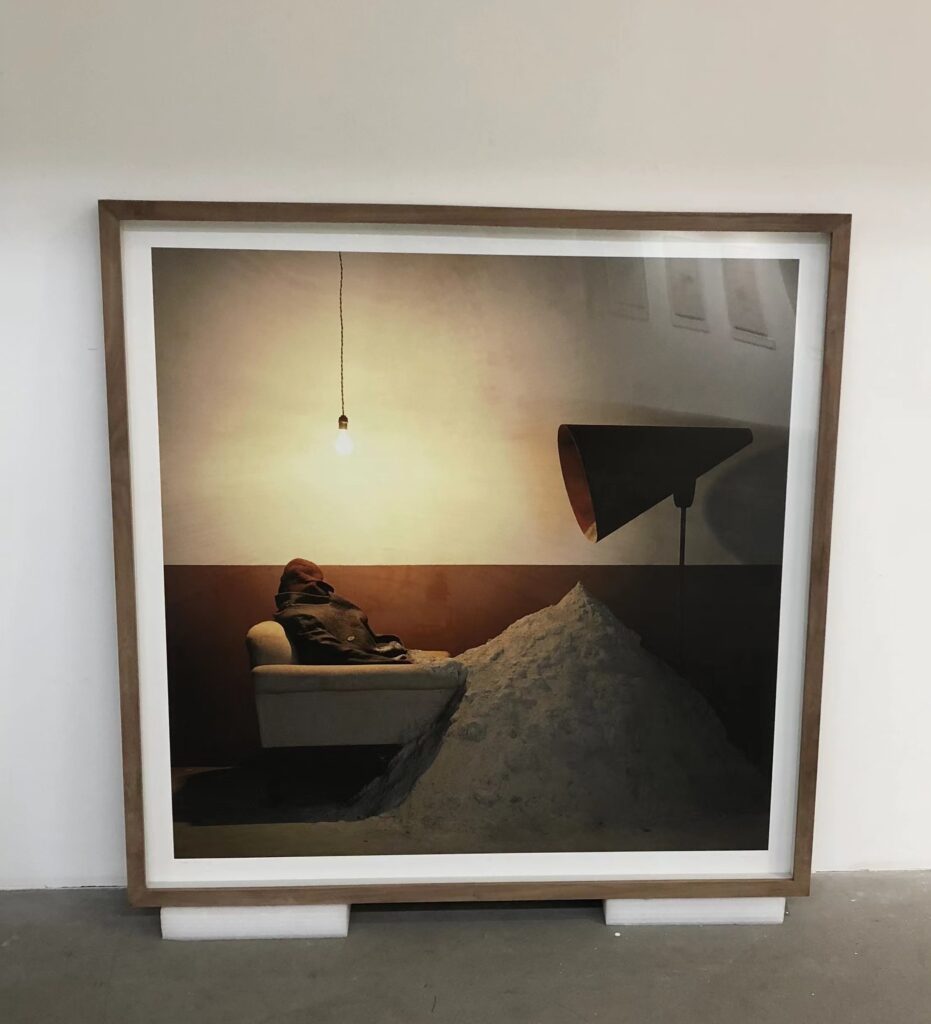
© Chen Wei, Some Dust, 2009. Courtesy of Sylvia Wang
Constructed skillfully from the interplay of light, shadow and space, Chen Wei’s works ooze dramatic tension in their visual expression. As an artist featured in the first co-curation project of West Bund Museum and the Centre Pompidou, Chen has a style that is unique among artists born in the 80s. His ongoing New City project focuses on the rapid urbanization process and people of similar ages will empathize with the cityscapes and urban culture it depicts. I have also collected multiple prints of An Iron Sheet, a work in his exhibition with HOW Art Museum last year. It is an honorable and magical feeling to see artworks that were once exhibits become private collectables.
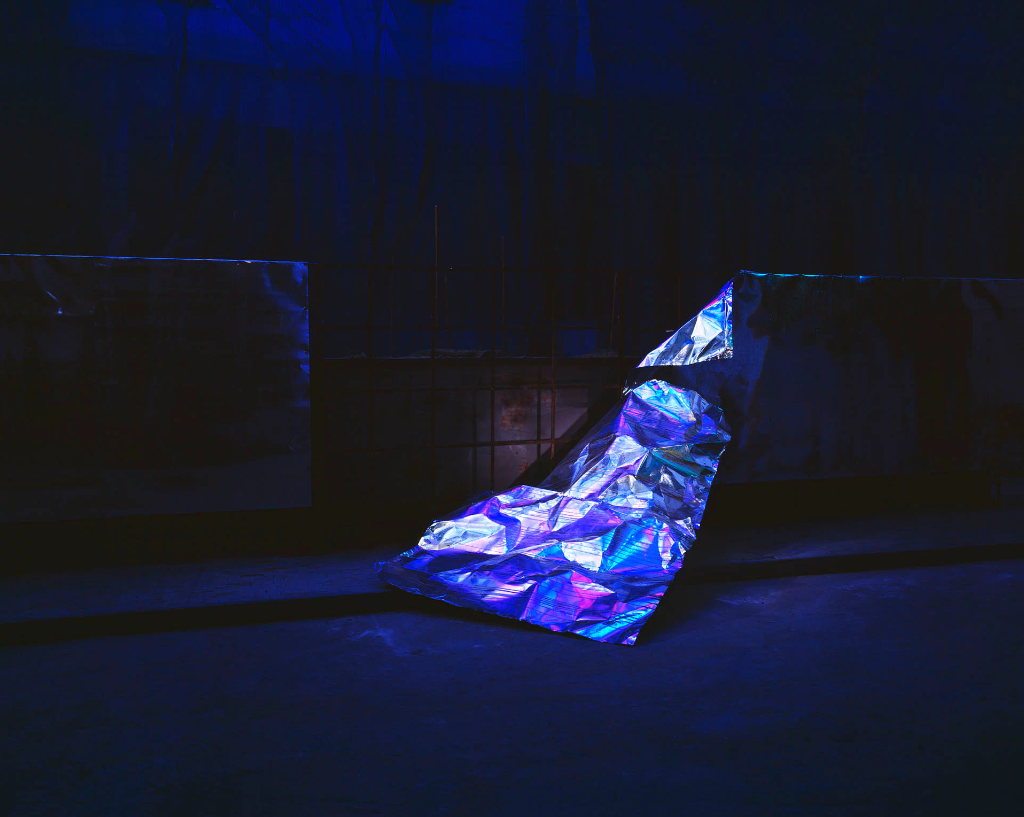
© Chen Wei, An Iron Sheet, 2015. Courtesy of Sylvia Wang
PF: Which exhibit from Wanderings impressed you?
S: The online exhibition covers photography, video works and print publications, with themes related to different types of wanderings, making the online tour feels like a leisure walk in the clouds. On the technical level, the “zoom in” function which allows users to click on the image of an artwork to see its details really enriches the user experience.
In addition to Chen Wei’s New Gates and Billiard Ball, Expedition #43 by Singaporean artist Robert Zhao Renhui brings cool breeze to hot summer days, teleporting us back to the Arctic glaciers of 2011. The Glacier Study Group consists of scientists, artists and activists who are concerned with the glacier melting due to global warming. The moment of leap in the frame is breath-taking and has the power that tranquilizes the surroundings.
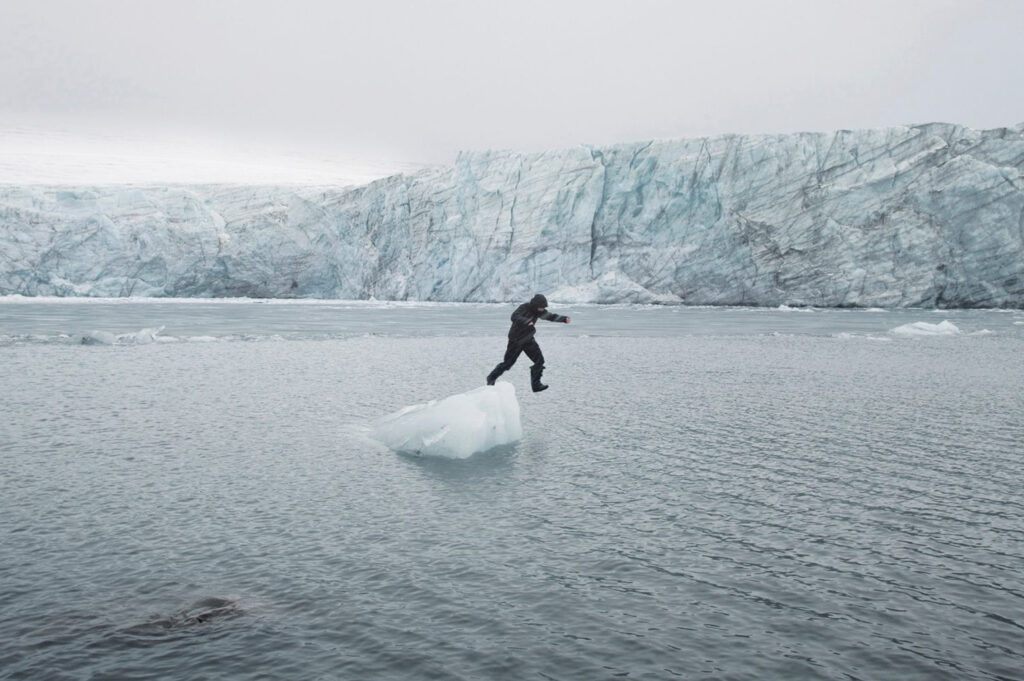
© Robert Zhao Renhui, Expedition #43, 2011. Courtesy of ShanghART Gallery (Shanghai, Beijing & Singapore)
In the publication section, “The Port and the Image” Project plans to use ports as the base of research and appoint artists to conduct media practices like photography. I have lived in port cities like Hong Kong, Shanghai and Ningbo, all of which are covered in the project. One of the initiators, China Port Museum, is located in Beilun Port, which feels close to me when combining it with Ningbo’s city slogan “To become a city of culture and a gateway to the world”.
PF: How has art collection changed your work and life?
S: Art collection has expanded my life’s boundary. From promoting art on social media under the brand of “Yinghan’s Dictionary”, to becoming the founding patron of the M+ Museum of Visual Culture in Hong Kong, to joining the NFT art distribution platform TRLab as the Asia Lead, I lead a hectic but enjoyable life. I have also become good friends with many artists, gallery owners and curators. We often meet and share ideas and experiences, and also arrange exhibition-themed trips from time to time.
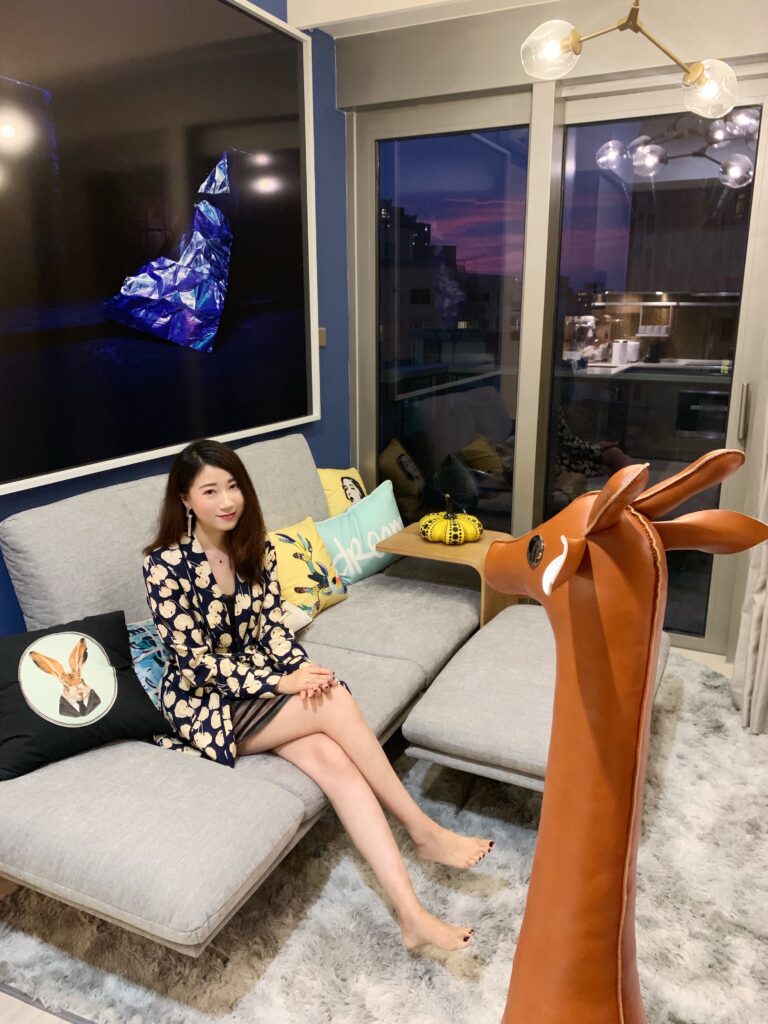
© Chen Wei's work at Sylvia's home in Hong Kong. Courtesy of Sylvia Wang
PF: Do you plan your collection activity? Has your taste or interest in art collection changed as you gain more life and professional experiences?
S: As I continue to collect art, I begin to better understand my own preference and I am able to develop my unique collection system that fits my background and education, valuing long-term potential rather than blindly following market hot trends. I personally also enjoy the research process prior to collecting as it enables me to have a deeper understanding of the artist’s creative background and how he/she presents the work, so that I can be very familiar with each piece of my collection.
In addition to the current media, I am passionate about new art forms. NFT artworks can be seen as an extension of image artworks and this topic has been the focus of my study recently.
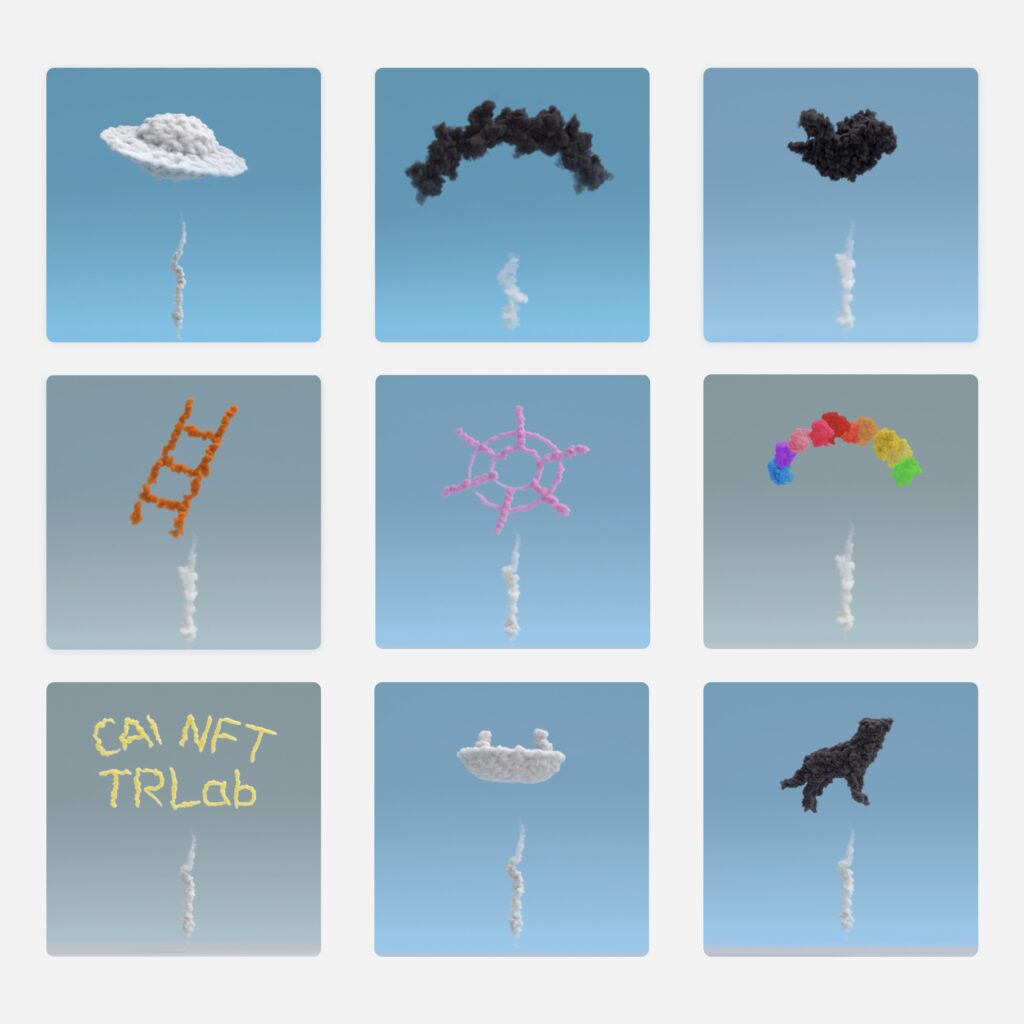
© Cai Guoqiang, Your Daytime Fireworks. Courtesy of Sylvia Wang
Cai Guoqiang’s Your Daytime Fireworks series, released earlier at TRLab, presents 90 different types of fireworks, consisting of a total of 7,000 pieces. In the middle of the project, collectors can also choose to burn the 9 types of fireworks that have been set off for a limited edition NFT titled Imagine This which showcases Cai’s creative process, a novel and intriguing mechanism. This is the third NFT series released by Cai at TRLab and it provides a good reference for more collectors in the fine art field to create NFTs. I will continue to stay current with crypto art field, try to integrate more artists’ visual creations into the crypto ecosystem, and start a new artistic exploration in the world of web 3.0.
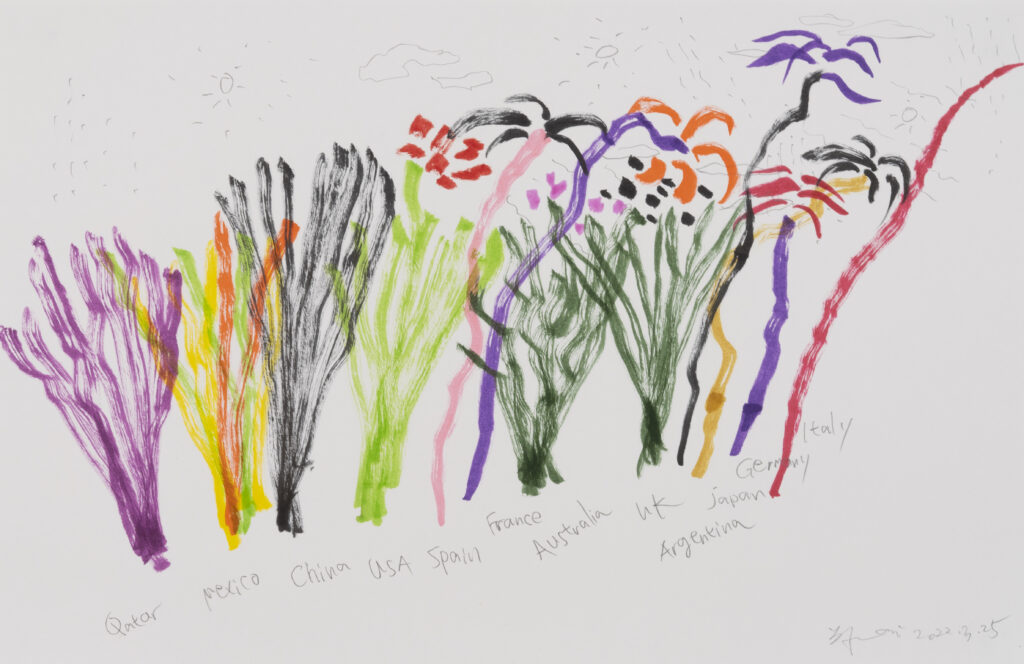
© Cai Guoqiang, Imagine This from Your Daytime Fireworks series. Courtesy of Sylvia Wang
I will continue to stay current with crypto art field, try to integrate more artists’ visual creations into the crypto ecosystem, and start a new artistic exploration in the world of web 3.0.